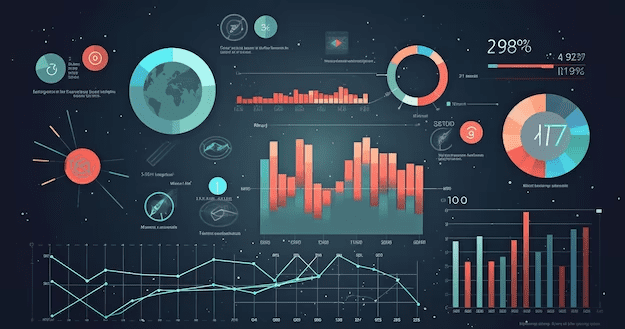Introduction
Data represents unorganized information that undergoes processing to become meaningful and useful. In data science, we categorize data into three main types: structured, semi-structured, and unstructured. Most individuals unfamiliar with computer science or data science likely recognize structured data. This data type can be neatly arranged in a row and column format, similar to what you find in an Excel spreadsheet or a MySQL database. For instance, structured data includes information collected through online forms and data from e-commerce websites like Amazon or eBay.
Additionally, we can visualize structured data using various graphical representations, such as line charts, bar charts, or pie charts. But what about the other types of data? Let’s explore them further.
Semi-structured data
Semi-structured data possesses some organizational properties but does not adhere to a fixed or rigid schema. Unlike structured data, semi-structured data cannot be stored in a traditional row-and-column format within an SQL database. Instead, it typically contains tags, elements, or metadata that help organize the data in a hierarchical manner. This organization allows for some level of structure while still maintaining flexibility. Common examples of semi-structured data include emails, XML files, and other markup languages. Additionally, binary executables and TCP/IP packets also fall under this category. These examples illustrate how semi-structured data can be organized and flexible, making it useful in various applications.
Unstructured data
Unstructured data lacks a clearly identifiable structure, making it more challenging to analyze and process. Similar to semi-structured data, unstructured data cannot be stored in a row-and-column format like an Excel spreadsheet or a MySQL database. Instead, it exists in a more free-form state. Examples of unstructured data include web pages, social media feeds, images in various formats, video files, audio files, PDF documents, PowerPoint presentations, media logs, and survey responses. The sheer volume and variety of unstructured data present unique challenges for data scientists and analysts.
Organizations often use NoSQL (not only SQL) databases to manage unstructured data effectively. These databases emerged as a response to the increasing volume, diversity, and speed at which data is generated today. NoSQL databases offer a flexible schema design, allowing users to store and retrieve unstructured data more efficiently. The rise of cloud computing, the Internet of Things (IoT), and the proliferation of social media have significantly influenced the development and adoption of NoSQL databases. These technologies enable businesses to harness the power of unstructured data, turning it into valuable insights that can drive decision-making.
The Importance of Understanding Data Types
Understanding the different data types is crucial for businesses and organizations leveraging data science effectively. Each data type serves a unique purpose and requires different methods for processing and analysis. By recognizing the distinctions between structured, semi-structured, and unstructured data, organizations can make informed decisions about how to collect, store, and analyze their data.
For instance, structured data is often easier to analyze due to its organized format. Businesses can quickly generate reports and insights from structured data, making it a valuable asset for decision-making. On the other hand, semi-structured data offers a balance between organization and flexibility. Organizations can extract meaningful information from semi-structured data while accommodating changes in data formats and structures.
Unstructured data, while more challenging to analyze, holds immense business potential. Organizations can uncover hidden patterns and trends within unstructured data by utilizing advanced analytics techniques and tools. This information can lead to valuable insights that drive marketing strategies, product development, and customer engagement.
Practical Applications of Data Types
The practical applications of structured, semi-structured, and unstructured data are vast and varied. For example, businesses can use structured data to track sales performance, monitor inventory levels, and analyze customer demographics. This data can help organizations make data-driven decisions that enhance operational efficiency and improve customer satisfaction.
In contrast, semi-structured data can be particularly useful for customer relationship management (CRM) systems. Businesses can gain insights into customer preferences and behaviors by analyzing emails, customer feedback, and social media interactions. This information can inform marketing strategies and help organizations tailor their offerings to meet customer needs.
Unstructured data has become increasingly important in the age of big data. Companies can analyze social media feeds, customer reviews, and multimedia content to understand public sentiment and brand perception. By tapping into unstructured data, organizations can identify emerging trends, monitor competitor activities, and enhance their overall marketing efforts.
Conclusion
In conclusion, understanding the different data types—structured, semi-structured, and unstructured—is essential for businesses aiming to leverage data science effectively. Each data type offers unique advantages and challenges, and organizations must adopt appropriate strategies for collecting, storing, and analyzing their data. By doing so, they can unlock valuable insights that drive informed decision-making and enhance overall business performance.
To gain more insights into digital marketing, explore information about SEO and examine Divi’s features. These resources provide valuable information on using data science effectively in business. For more details, visit our blog section. If you have questions or want a FREE website analysis, fill out our contact form. We’re ready to help! Our team is committed to helping you understand how data science can transform your business and improve decision-making processes.

